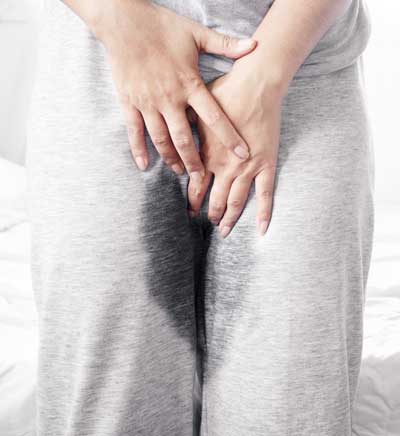This issue is called stress incontinence, and it is a very common problem which is frequently undiagnosed and untreated. Urinary incontinence symptoms increase as women age, and it is present in 40-70% of women over 60.
Stress incontinence is also associated with post-menopausal complaints such as vaginal dryness, burning and pain during intercourse.
Contributing factors beyond age include: obesity, number of pregnancies, engaging high-impact exercise regimens (cross-fit, weight lifting), diabetes, recurrent urinary tract infections and a history of pelvic surgery.
Treatment for this condition includes weight loss (MLA can help you with this), pelvic muscle exercises (these must be done on a daily basis), bladder training (ready to keep a diary of fluid intake and urination frequency?), topical vaginal estrogens, vaginal pessary insertion (can cause recurrent urinary infections), oral medications (none are FDA approved for this application) and surgery.

Vaginal laser therapy has shown[1] thickening and improvement of the quality of vaginal tissue and tightening of the urinary/pelvic floor. The laser energies can reach deep into the tissue without causing superficial vaginal skin damage, resulting in increased collagen deposition, vascularity and a substantial improvement of symptoms, including resolution of stress-induced incontinence in some patients with mild to moderate incontinence.
The laser is encased in a glass speculum and never touches the vaginal tissue. The treatment takes about 20 minutes, and there is no down-time. The patient takes her vaginal speculum with her and brings it back for her next treatment. A total of 2-3 treatments is usually needed.
[1] Gaspar, A., et.al., Efficacy of Erbium:YAG laser treatment compared to topical estriol treatment for symptoms of Genitourinary Syndrome of Menopause, Lasers in Surgery and Medicine, 2016.



